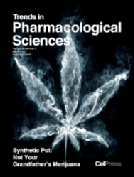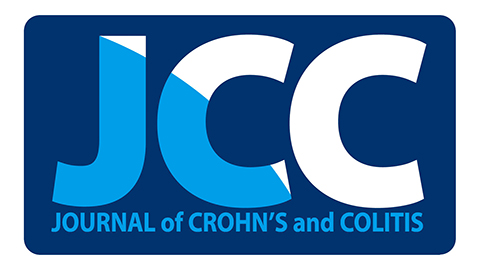
“Cannabinoid receptors, endocannabinoids and the enzymes responsible for their biosynthesis and degradation constitute the endocannabinoid system. In recent decades, the endocannabinoid system has attracted considerable interest as a potential therapeutic target in numerous pathological conditions. Its involvement in several physiological processes is well known, such as in energy balance, appetite stimulation, blood pressure, pain modulation, embryogenesis, nausea and vomiting control, memory, learning and immune response, among others, as well as in pathological conditions where it exerts a protective role in the development of certain disorders. As a result, it has been reported that changes in endocannabinoid levels may be related to neurological diseases such as Parkinson’s disease, Huntington’s disease, Alzheimer’s disease and multiple sclerosis, as well as anorexia and irritable bowel syndrome. Alterations in the endocannabinoid system have also been associated with cancer, affecting the growth, migration and invasion of some tumours. Cannabinoids have been tested in several cancer types, including brain, breast and prostate cancers. Cannabinoids have shown promise as analgesics for the treatment of both inflammatory and neuropathic pain. There is also evidence for a role of the endocannabinoid system in the control of emotional states, and cannabinoids could prove useful in decreasing and palliating post-traumatic stress disorder symptoms and anxiolytic disorders. The role of the endocannabinoid system in addictions has also been examined, and cannabinoids have been postulated as alternative and co-adjuvant treatments in some abuse syndromes, mainly in ethanol and opioid abuses. The expression of the endocannabinoid system in the eye suggests that it could be a potential therapeutic target for eye diseases. Considering the importance of the endocannabinoid system and the therapeutic potential of cannabinoids in this vast number of medical conditions, several clinical studies with cannabinoid-based medications are ongoing. In addition, some cannabinoid-based medications have already been approved in various countries, including nabilone and dronabinol capsules for the treatment of nausea and vomiting associated with chemotherapy, dronabinol capsules for anorexia, an oral solution of dronabinol for both vomiting associated with chemotherapy and anorexia, a Δ9-tetrahydrocannabinol/cannabidiol oromucosal spray for pain related to cancer and for spasticity and pain associated with multiple sclerosis, and an oral solution of cannabidiol for Dravet and Lennox-Gastaut syndromes. Here, we review the available efficacy, safety and tolerability data for cannabinoids in a range of medical conditions.”
https://www.ncbi.nlm.nih.gov/pubmed/30374797
https://link.springer.com/article/10.1007%2Fs40265-018-0996-1



 “Changes in lipid metabolism are intimately related to cancer. Several classes of bioactive lipids play roles in the regulation of signaling pathways involved in neoplastic transformation and tumor growth and progression.
“Changes in lipid metabolism are intimately related to cancer. Several classes of bioactive lipids play roles in the regulation of signaling pathways involved in neoplastic transformation and tumor growth and progression.
 “Cannabinoid-based interventions are being explored for central nervous system (CNS) pathologies such as neurodegeneration, demyelination, epilepsy, stroke, and trauma. As these disease states involve dysregulation of myelin integrity and/or remyelination, it is important to consider effects of the endocannabinoid system on oligodendrocytes and their precursors. In this review, we examine research reports on the effects of the endocannabinoid system (ECS) components on oligodendrocytes and their precursors, with a focus on therapeutic implications. Cannabinoid ligands and modulators of the endocannabinoid system promote cell signaling in oligodendrocyte precursor survival, proliferation, migration and differentiation, and mature oligodendrocyte survival and myelination. Agonist stimulation of oligodendrocyte precursor cells (OPCs) at both CB1 and CB2 receptors counter apoptotic processes via Akt/PI3K, and promote proliferation via Akt/mTOR and ERK pathways. CB1 receptors in radial glia promote proliferation and conversion to progenitors fated to become oligodendroglia, whereas CB2 receptors promote OPC migration in neonatal development. OPCs produce 2-arachidonoylglycerol (2-AG), stimulating cannabinoid receptor-mediated ERK pathways responsible for differentiation to arborized, myelin basic protein (MBP)-producing oligodendrocytes. In cell culture models of excitotoxicity, increased reactive oxygen species, and depolarization-dependent calcium influx, CB1 agonists improved viability of oligodendrocytes. In transient and permanent middle cerebral artery occlusion models of anoxic stroke, WIN55212-2 increased OPC proliferation and maturation to oligodendroglia, thereby reducing cerebral tissue damage. In several models of rodent encephalomyelitis, chronic treatment with cannabinoid agonists ameliorated the damage by promoting OPC survival and oligodendrocyte function. Pharmacotherapeutic strategies based upon ECS and oligodendrocyte production and survival should be considered.”
“Cannabinoid-based interventions are being explored for central nervous system (CNS) pathologies such as neurodegeneration, demyelination, epilepsy, stroke, and trauma. As these disease states involve dysregulation of myelin integrity and/or remyelination, it is important to consider effects of the endocannabinoid system on oligodendrocytes and their precursors. In this review, we examine research reports on the effects of the endocannabinoid system (ECS) components on oligodendrocytes and their precursors, with a focus on therapeutic implications. Cannabinoid ligands and modulators of the endocannabinoid system promote cell signaling in oligodendrocyte precursor survival, proliferation, migration and differentiation, and mature oligodendrocyte survival and myelination. Agonist stimulation of oligodendrocyte precursor cells (OPCs) at both CB1 and CB2 receptors counter apoptotic processes via Akt/PI3K, and promote proliferation via Akt/mTOR and ERK pathways. CB1 receptors in radial glia promote proliferation and conversion to progenitors fated to become oligodendroglia, whereas CB2 receptors promote OPC migration in neonatal development. OPCs produce 2-arachidonoylglycerol (2-AG), stimulating cannabinoid receptor-mediated ERK pathways responsible for differentiation to arborized, myelin basic protein (MBP)-producing oligodendrocytes. In cell culture models of excitotoxicity, increased reactive oxygen species, and depolarization-dependent calcium influx, CB1 agonists improved viability of oligodendrocytes. In transient and permanent middle cerebral artery occlusion models of anoxic stroke, WIN55212-2 increased OPC proliferation and maturation to oligodendroglia, thereby reducing cerebral tissue damage. In several models of rodent encephalomyelitis, chronic treatment with cannabinoid agonists ameliorated the damage by promoting OPC survival and oligodendrocyte function. Pharmacotherapeutic strategies based upon ECS and oligodendrocyte production and survival should be considered.”


